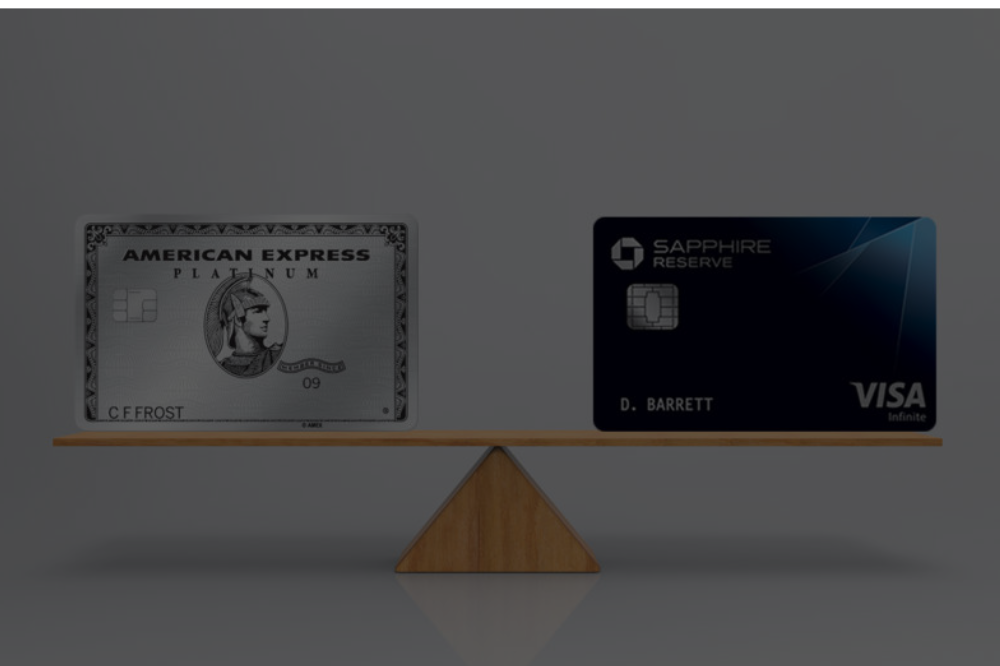When you’re running a business and frequently traveling, choosing the right premium credit card can make a significant difference in both your bottom line and your travel experience. Two cards consistently stand out in the premium business credit card space: the Chase Sapphire Reserve for Business vs Amex Business Platinum Card from American Express.
Both cards come with substantial annual fees—$795 and $895 respectively—but they also offer thousands of dollars in potential value through statement credits, travel perks, and rewards programs. The key question isn’t whether these cards are worth their fees, but rather which one aligns better with your specific business needs and spending patterns.
This comprehensive comparison examines every aspect of these two powerhouse cards, from their welcome bonuses and rewards structures to their extensive benefit packages. By the end, you’ll have a clear understanding of which card deserves a spot in your wallet.
Annual Fee Comparison: Every Dollar Counts
The Chase Sapphire Reserve for Business carries an annual fee of $795, while the Amex Business Platinum comes in at $895. That $100 difference might seem minimal when you’re looking at cards in this premium tier, but it’s worth considering as part of your overall cost-benefit analysis.
Both fees are substantial investments, which means you need to actively use the cards’ benefits to justify the cost. The good news? Both cards offer well over their annual fee in potential value if you can take advantage of their statement credits and travel perks.
Welcome Bonuses: A Strong Start for Both Cards
Both cards currently offer impressive welcome bonuses of 200,000 points, but the spending requirements differ significantly.
The Chase Sapphire Reserve for Business requires $30,000 in spending within the first six months, which breaks down to an average of $5,000 per month.
The Amex Business Platinum asks for $20,000 in spending within three months, averaging roughly $6,667 per month.
If you have predictable monthly business expenses, the Chase card’s longer timeframe might be more manageable. However, if you’re planning a large business purchase or equipment upgrade, the Amex card’s lower total spending requirement could work in your favor.
Rewards Structure: Where You Earn Points Matters
Chase Sapphire Reserve for Business Earning Rates
The Chase card shines with its generous earning structure:
- 8X points on Chase Travel℠ purchases
- 5X points on Lyft rides (through September 30, 2027)
- 4X points on flights and hotels booked directly
- 3X points on social media and search engine advertising
- 1X points on all other purchases
This structure particularly benefits businesses that travel frequently and those investing in digital marketing. The uncapped earning potential across all categories is also a significant advantage.
Amex Business Platinum Earning Structure
The Amex card takes a different approach:
- 5X points on flights and prepaid hotels booked through AmexTravel.com
- 2X points on eligible business categories and purchases of $5,000 or more (up to $2 million annually)
- 1X points on other eligible purchases
The 2X earning categories include U.S. construction materials, hardware suppliers, electronic goods retailers, software and cloud providers, and shipping providers.
The $5,000+ purchase bonus is particularly valuable for businesses making large equipment or inventory purchases.
Transfer Partners: Maximizing Your Points Value
Both cards earn transferable points that can be moved to airline and hotel loyalty programs, typically offering the best redemption value.
Chase offers 14 transfer partners, including popular options like:
- World of Hyatt
- United MileagePlus
- Southwest Airlines Rapid Rewards
- British Airways Club
Amex provides access to 21 transfer partners, including:
- Delta SkyMiles
- Hilton Honors (at 1:2 ratio)
- Singapore Airlines KrisFlyer
- Virgin Atlantic Flying Club
The overlap between programs means you’ll likely find suitable options with either card, but Amex’s larger selection provides more flexibility for international travel planning.
Statement Credits: Where the Real Value Lives
Chase Sapphire Reserve for Business Credits
The Chase card offers over $2,000 in potential annual statement credits:
- $500 The Edit℠ hotel credit (two $250 credits semi-annually)
- $300 annual travel credit
- $400 ZipRecruiter credit (hiring platform)
- $200 Google Workspace credit
- $420 DoorDash value (including Dash Pass membership)
- $120 Lyft credits
- $100 Giftcards.com credit
- $120 TSA PreCheck/Global Entry credit (every four years)
These credits are relatively straightforward to use and cover common business expenses like travel and office software.
Amex Business Platinum Credits
The Amex card provides over $3,000 in potential annual value, though some credits require specific spending thresholds:
- $600 Fine Hotels + Resorts or Hotel Collection credit
- $1,150 Dell credit ($150 base + $1,000 after spending $5,000+)
- $360 Indeed.com credits
- $250 Adobe credit (after spending $600+)
- $200 Hilton credit
- $200 airline fee credit
- $120 wireless telephone credits
- $209 CLEAR Plus credit
While the total value is higher, several credits require additional spending or enrollment, making them potentially more complex to maximize.
Airport Lounge Access: Premium Travel Perks
Chase Lounge Benefits
The Chase card provides:
- Access to Chase Sapphire Lounge® by The Club locations
- Priority Pass Select membership with 1,300+ lounges worldwide
- Two complimentary guests (additional guests cost $27 each)
Amex Lounge Network
The Amex card offers broader access:
- American Express Global Lounge Collection (1,550+ lounges)
- Centurion® Lounges
- Delta Sky Club (10 visits annually when flying Delta)
- Priority Pass enrollment required for some lounges
Amex provides more lounge options globally, but Chase’s inclusion of two free guests adds significant value for business travelers who frequently travel with colleagues or clients.
Additional Business Benefits
Both cards offer hotel elite status benefits and rental car perks. The Chase card provides IHG One Rewards Platinum Elite Status, while Amex offers Gold status with both Hilton Honors and Marriott Bonvoy.
For businesses focused on travel insurance and protections, both cards deliver comprehensive coverage including trip delay protection, purchase protection, and rental car insurance.
High-Spending Bonuses: Rewards for Big Spenders
The Chase card rewards high spenders after reaching $120,000 in annual spending with additional benefits including IHG Diamond status and Southwest A-List status.
The Amex card requires an even higher threshold—$250,000 annually—to unlock additional flight credits and access to Amex’s accounts payable service.
Making Your Decision: Which Card Fits Your Business?
Choose the Chase Sapphire Reserve for Business if:
- You frequently book travel directly with airlines and hotels
- Your business invests heavily in digital marketing
- You prefer straightforward statement credits
- You often travel with guests who would benefit from lounge access
- You want strong travel insurance coverage
Choose the Amex Business Platinum if:
- You make frequent large purchases ($5,000+)
- Your business operates in construction, hardware, electronics, or shipping
- You can take advantage of the specialized statement credits
- You prefer booking through Amex Travel for the bonus earning
- You want the broadest possible lounge access network
Frequently Asked Questions
Can I hold both the personal and business versions of these cards?
Yes, you can hold both the Chase Sapphire Reserve and Chase Sapphire Reserve for Business simultaneously. The same applies to Amex personal and business Platinum cards.
How do the travel credits work?
Chase provides a straightforward $300 annual travel credit applied automatically to eligible purchases. Amex offers up to $600 in hotel credits, but these must be used for specific prepaid bookings through their travel portal.
Which card offers better travel insurance?
Both cards provide comprehensive travel insurance coverage. Chase offers primary rental car coverage, while Amex provides secondary coverage. Both include trip delay, cancellation, and baggage insurance.
Are the statement credits worth the annual fees?
If you can use most of the available credits, both cards offer value exceeding their annual fees. However, this requires actively monitoring and using the various credit categories throughout the year.
Your Next Step Forward
Both the Chase Sapphire Reserve for Business and Amex Business Platinum represent excellent choices for business owners seeking premium travel rewards and comprehensive benefits. The “better” card depends entirely on your specific spending patterns, travel preferences, and ability to maximize the available statement credits.
Consider tracking your business expenses for a month to see which card’s bonus categories align with your actual spending.
Factor in your travel style—do you prefer booking directly or through travel portals? Do you need lounge access for guests? These practical considerations often matter more than the theoretical maximum value each card can provide.
The key to success with either premium card lies not in choosing the one with the highest potential value, but in selecting the card whose benefits align most closely with how you actually run your business and travel!

